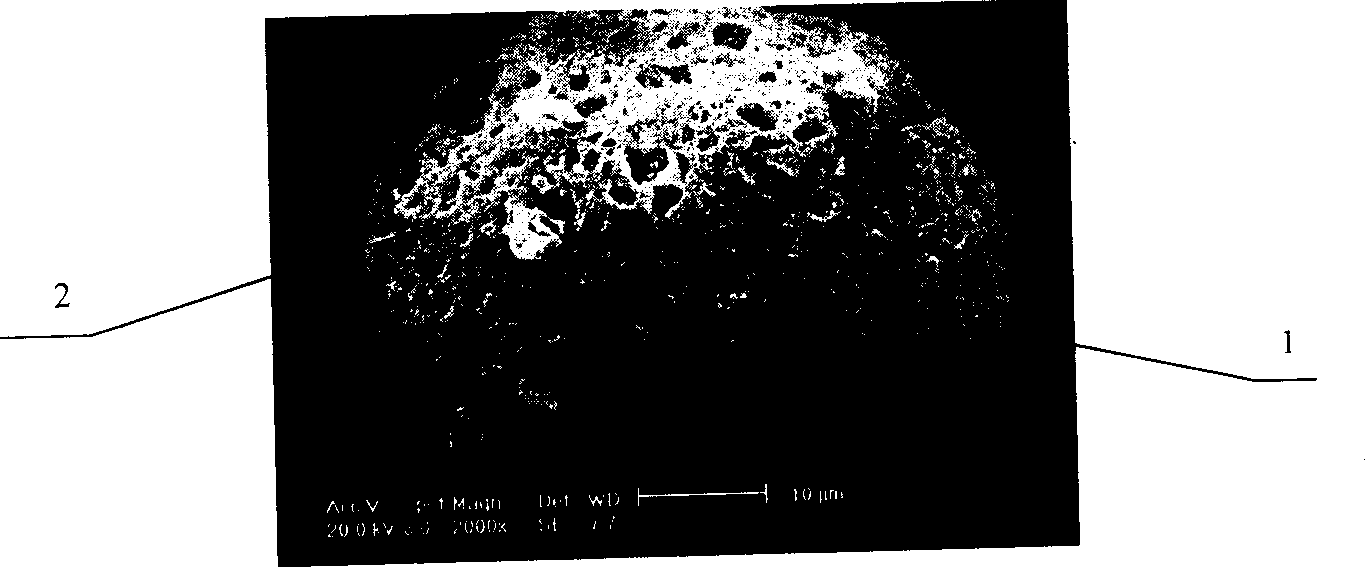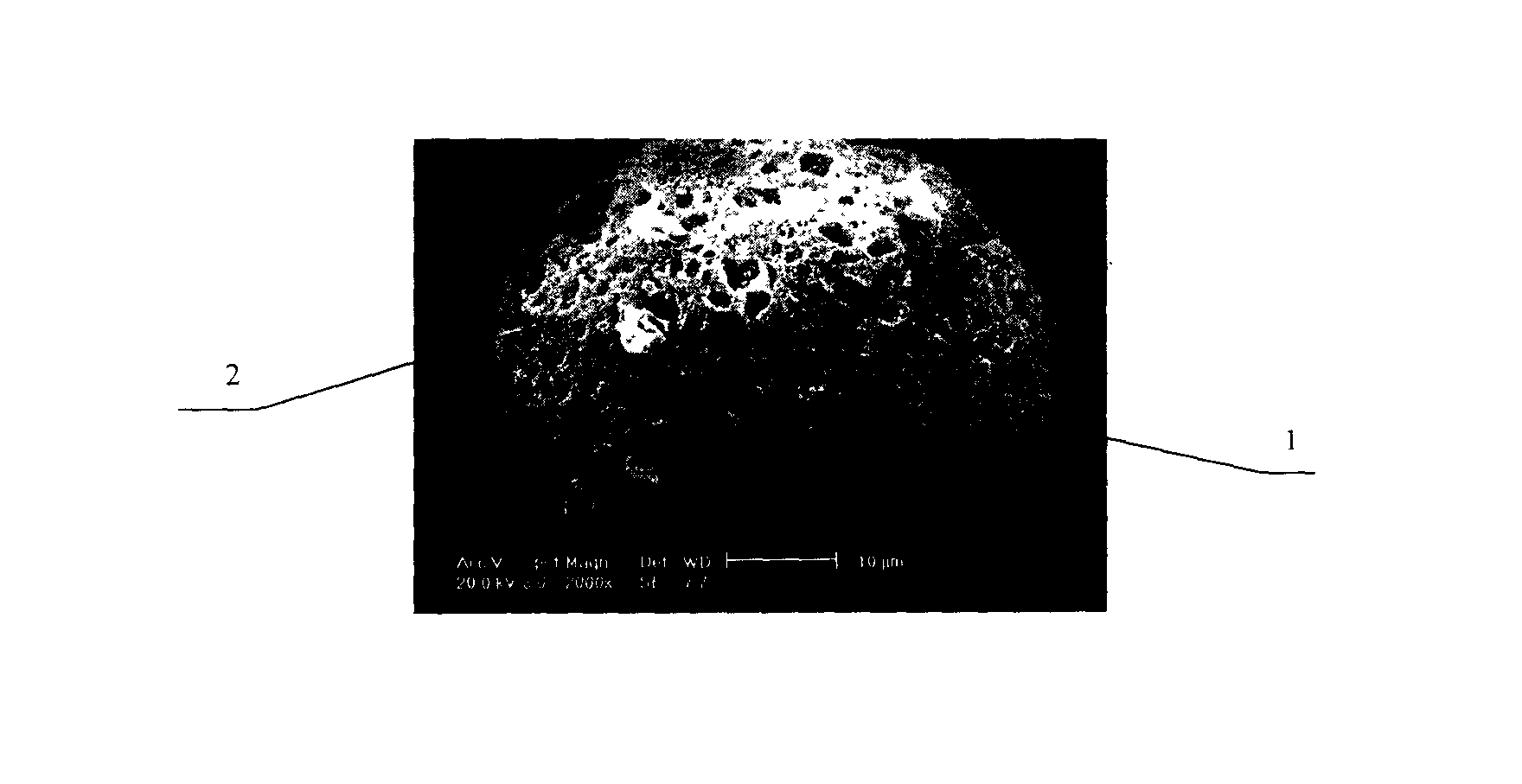Method for preparing microspheric PGDT separating medium with two kinds of pore forms
A separation medium and microsphere technology, applied in chemical instruments and methods, ion exchange, ion exchange regeneration, etc., can solve the problems of easy breakage, application limitation, irregular shape, etc., and achieve convenient operation, weak non-specific adsorption, The effect of mild elution conditions
- Summary
- Abstract
- Description
- Claims
- Application Information
AI Technical Summary
Problems solved by technology
Method used
Image
Examples
Embodiment 1
[0016] Weigh 5.00 grams of glycidyl methacrylate (GMA), 1.70 grams of divinylbenzene (DVB), 1.46 grams of triallyl isocyanurate (TAIC), 1.84 grams of toluene, 1.33 grams of n-heptane, 0.12 Add 12.9 grams of calcium carbonate to a 50ml Erlenmeyer flask and mix evenly. Prepolymerize for 24 hours in a super constant temperature water bath at 40°C. In a three-necked flask equipped with a stirrer, a reflux condenser and a thermometer, after adding 1% polyvinyl alcohol solution, the reaction mixture was added. Under the protection of nitrogen, adjust the stirring speed. After the droplets are dispersed into an appropriate particle size, slowly raise the temperature to 65°C at a speed of 1°C / 3 minutes, react for 3 hours, then raise the temperature to 75°C at the same speed, and react for 1 hour. Finally, the temperature was raised to 85° C., and the reaction was carried out for 2 hours. Then the polymer microspheres were transferred into nylon sandbags and extracted with ethanol fo...
Embodiment 2
[0018] Weigh 5.00 grams of GMA, 1.01 grams of DVB, 1.05 grams of TAIC, 1.19 grams of toluene, 0.87 grams of n-heptane, and 0.12 grams of azobisisobutyronitrile into a 50ml Erlenmeyer flask, mix well, add 14 grams of calcium carbonate, mix uniform. According to the method in Example 1, 6.0 grams of PGDT two-type pore separation medium that can be used for protein adsorption in anion exchange mode was synthesized. The volume average particle size is 49.1μm, and its specific surface area is 28.7m 2 / g, the static adsorption capacity is 34.9mgBSA / g wet separation medium. Column packing by gravity settling method. At a flow rate of 180.0 cm / h, the dynamic adsorption capacity reached 13.4 mgBSA / ml column volume (21.3 mgBSA / g wet separation medium).
PUM
| Property | Measurement | Unit |
|---|---|---|
| particle diameter | aaaaa | aaaaa |
| pore size | aaaaa | aaaaa |
| particle size | aaaaa | aaaaa |
Abstract
Description
Claims
Application Information
 Login to View More
Login to View More - R&D
- Intellectual Property
- Life Sciences
- Materials
- Tech Scout
- Unparalleled Data Quality
- Higher Quality Content
- 60% Fewer Hallucinations
Browse by: Latest US Patents, China's latest patents, Technical Efficacy Thesaurus, Application Domain, Technology Topic, Popular Technical Reports.
© 2025 PatSnap. All rights reserved.Legal|Privacy policy|Modern Slavery Act Transparency Statement|Sitemap|About US| Contact US: help@patsnap.com


